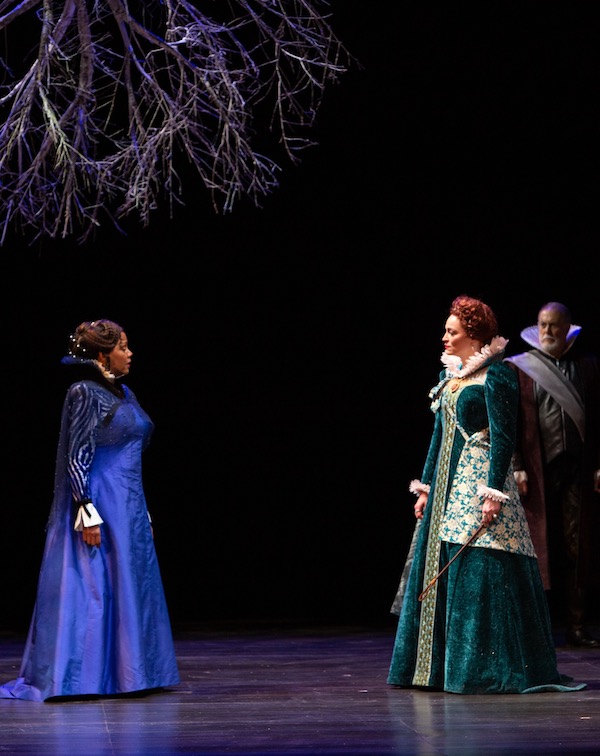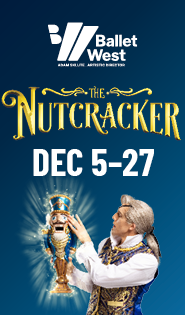Killer queens face off in Pioneer Theatre’s seething “Mary Stuart”

“When shall I have freedom on this throne?” Queen Elizabeth of England laments in Mary Stuart, Jean Stock Goldstone and John Reich’s 1957 adaptation of Friedrich Schiller’s classic tragedy, now playing at Pioneer Theatre Company.
Well aware that “you cannot call a man a king who studies all his deeds to please his people,” Elizabeth is faced with a terrible choice: whether or not to order the execution of her cousin Mary, erstwhile Queen of Scots, whom she has kept under house arrest for 19 years.
Pioneer’s dueling sovereigns, Anne Bates (Elizabeth) and Erika LaVonn (Mary), command the stage in Pioneer’s new production. Under Shelley Butler’s astute direction, each woman presents a veneer of serene confidence, yet each is far more complex than she initially appears. Even when LaVonn’s Mary knows her life depends on careful diplomacy in her meeting with Elizabeth, she can’t restrain her queenly pride or the formidable intellect behind it. Bates, meanwhile, conveys barely contained desperation as Elizabeth wrestles with the implications of her choice.
The queens—especially Elizabeth—must negotiate a thicket of agendas from the manipulative men who surround them. These include the overbearing Lord Burleigh (Robert Scott Smith), relentlessly pushing Elizabeth to dispose of her Catholic rival; brash Sir Edward Mortimer (Jamen Nanthakumar), who comes unhinged before our eyes; the principled Earl of Shrewsbury (Bill Kux), who appeals to Elizabeth’s conscience; and the double-dealing Earl of Leicester (Robert Mammana), arguably the adeptest politician of them all.
Fenton Li earns most of the evening’s laughs as the hapless Sir William Davison. Allen McCullough deftly handles the contrasting roles of solicitous Count L’Aubespine and kindly Sir Andrew Melvil; he brings much-appreciated humanity to the stage when Melvil becomes Mary’s confessor. Others on Team Mary include Colleen Baum as steadfast companion Hannah Kennedy and Eric Hoffmann as the conflicted Sir Amias Paulet.
Though we’re now even further removed from the 1800 premiere of Schiller’s often-adapted play than Schiller was from the 16th-century events he dramatized, many of its themes—government by popular opinion, gender politics, refugee rights, royal life as a gilded cage—are startlingly timely. On the other hand, it’s interesting to consider how differently Mortimer’s declaration of love for Mary might have played in the late 1950s, when this particular version premiered, than it does in 2020. And would a modern playwright follow up Mary’s final confession, a scene that finds LaVonn at her most compelling, with a moralizing coda delivered by a man?
As usual at Pioneer, production values in this show are high. Sara Ryung Clement’s minimally furnished set keeps the focus on the actors as it switches from Mary’s stark stone cell to Elizabeth’s marble-halled palace in seconds. Likewise, Brenda van der Weil’s costumes give the male courtiers just a splash or two of color, all the better to draw our eyes to the lavishly gowned queens. When we meet them, Mary wears indigo and black, with Elizabeth in regal red; by play’s end, the color scheme is reversed, inviting us to consider again who the real prisoner is.
Mary Stuart plays at Pioneer Theatre Company through Jan. 25. Performances are in the Roy W. and Elizabeth E. Simmons Pioneer Memorial Theatre at the University of Utah, 300 S. 1400 East, Salt Lake City; 801-581-6961 or pioneertheatre.org/tickets/.

